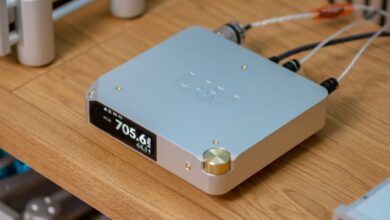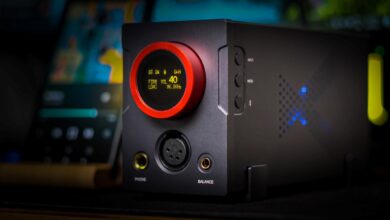
My video review:
At FiiO Spring Launch Event held in March 2019, FiiO wowed the crowd with multiple new and innovative devices. As far as I know they embraced first the THX AAA lowest-noise amp module that could be used in a DAP, they introduced a DAP with 3 headphone outputs to impress the crowd, that was never done before, a balanced 2.5 mm and a 4.4 mm AND a single ended 3.5 mm headphone out is a single device? That’s madness, audiophile madness!
Of course, the star and king of that show was the beautiful M11 DAP that everybody drooled about, myself included. Not because it became the new flagship in the FiiO DAP line-up, but because overnight it became most wanted DAP in the portable audio community, it looked great, it had impressive design ‘n specs, it had all the headphone outputs we could wish for and it had an impressive 449 USD price tag! What’s not to like?
FiiO shown us the legacy it left behind and the new path it is following in terms of design and sound. M11 seems like a direct successor to the X5 MKIII that looked absolutely bonkers for that time but sounded not as impressive.
Before we dig deep into it let’s take a look at the box and its contents.
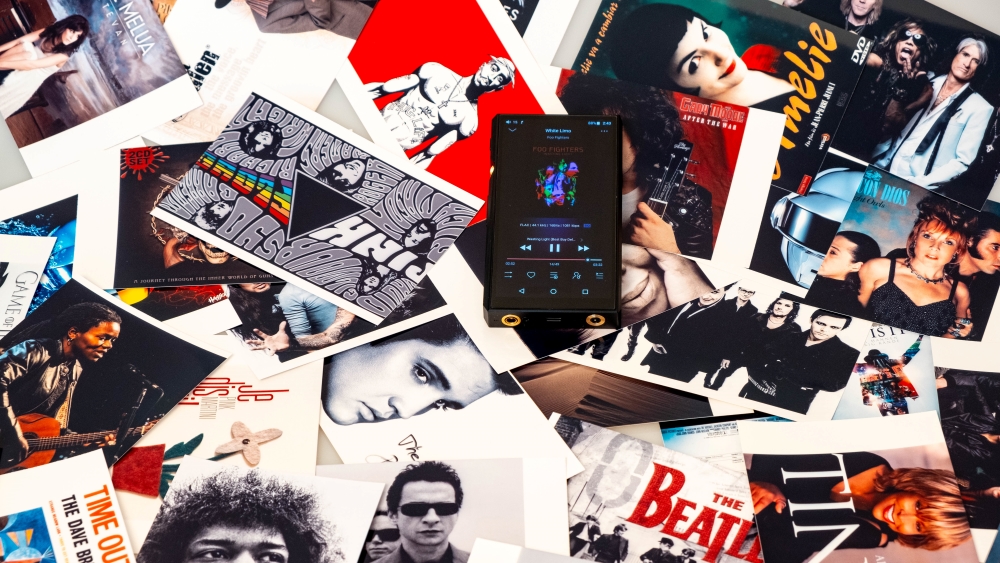
Unboxing and packaging
The box is fairly small but its thick and feels as a high quality one. Opening up the box reveals the M11 covered by a big and bold FiiO Smart Hi-Res Music Player sticker on the screen, FiiO is learning fast as I’ve seen that sticker multiple times in competing devices. M11 is dressed from the factory in a clear TPU protective case, there is also a glass screen protector pre-applied. Underneath it a small pin that opens the microSD card slot is found and two small boxes that contain an USB type-C cable, a Coaxial to 3.5mm adapter, an user manual and a quick start guide. I hoped to see a faux-leather case, but it’s a pass this time, maybe their next M13 will have one? One could only dream…
After I’ve taken everything out, I was impressed by how FiiO used every square inch inside to squeeze-in all those accessories. The package could not be smaller than that, as a result less bookshelf space is needed, cool!
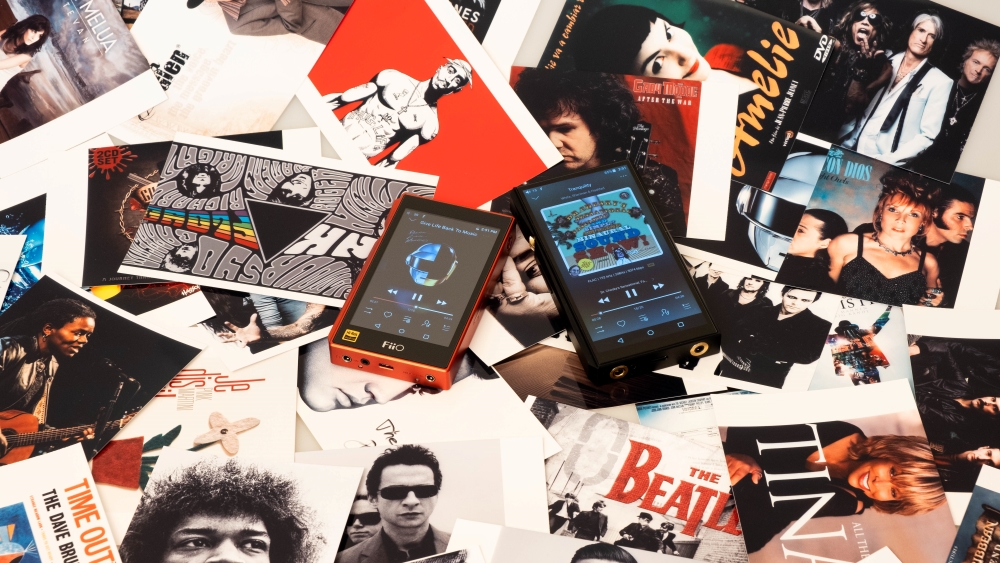
Design and Build Quality
M11 feels absolutely impressive and solid as a brick in hand. Taking out the TPU case which by the way I don’t think does justice to M11 looks, reveals a beautiful machined aluminum device with sharp edges, a huge glass sheet on the back covering a carbon fiber look and a huge bezel-less screen that has the exact same dimensions with the glass on the back. It looks balanced and really thought out. Touching it and carefully checking it revealed tiny little things that sometimes do make a difference like for example the power On/Off button has a soft press surrounded by a cool blue light, on the back there are two Hi-Res Audio and Hi-Res Audio Wireless certifications laser engraved under the glass, gone are the Hi-Res paper stickers spotted on older devices. It has impressive tolerance numbers and just looks as a high-end device and certainly not as midrange one.
Also the tiny lettering on all buttons is machined directly on the aluminum, the small gold curly volume wheel has a nice grip and a wonderful feedback once turned and a very pleasant clicky sound, it reminds me a lot about quality analog stepped volume attenuators like the DACT CT-2/4 as it has almost the same clicky sound and feedback.
As a whole I think it looks minimalist, industrial a bit, feels heavy in hand and makes an outstanding first impression on everybody, even on the street people are asking me what is that?

Buttons & Layout
Speaking about buttons, it has only 4 of them: Power On/Off, volume up and down and the play/pause button and that’s it!
Gold color volume wheel has a very nice tactile feedback and clicks pleasantly. It has a curly design so it will not slip through your thumbs. FiiO added dust resistance to it for a greater durability.
Returning home are those sexy TWO microSD card slots that theoretically are supporting up to 2TB per card so 4TB of memory in total, DSD nerds this is for you!
On the bottom there are 3 headphone outputs to cover all your cables and needs: a balanced 4.4 mm, a balanced 2.5mm and a SE 3.5 mm, in the middle there is your USB type-C for data transfer and charging. It has two quick charging standards: Quick Charge 2.0 (QC 2) and MediaTek’s Pump Express so you can charge it empty to full in about 2.5 hours, neat!
The normal 3.5 mm headphone jack also works as a clean 1.95V Line-out or as a Coaxial output transforming the M11 into a powerful digital transport to another audio source.

Display
The bezel-less 5.15” IPS multi-touch screen is godly impressive to look at and play with. To this day it is the most colorful display FiiO put in a portable DAP. It has a better contrast, so deeper blacks and whiter whites and a very clear image due to that 1440 x 720 pixel resolution. It has an interesting aspect ration of 18:9 so watching a movie or playing a game can become an immersive experience, even few youtubers are already filming videos in this aspect ration (MKBHD I am looking at you 😊). Due to high number of dots per inch, 312 more exactly the image is always crisp and clear to a point where my cover albums became blurry due to low-res cover files, I’ll need to upgrade those to a higher resolution soon. It is also crazy bright even in direct sunlight, I am mostly using it at half brightness to have a better battery life.
Gone is the fat chin and large forehead of the M9 for a much clearer and bezel-less screen that impresses at the first glance.
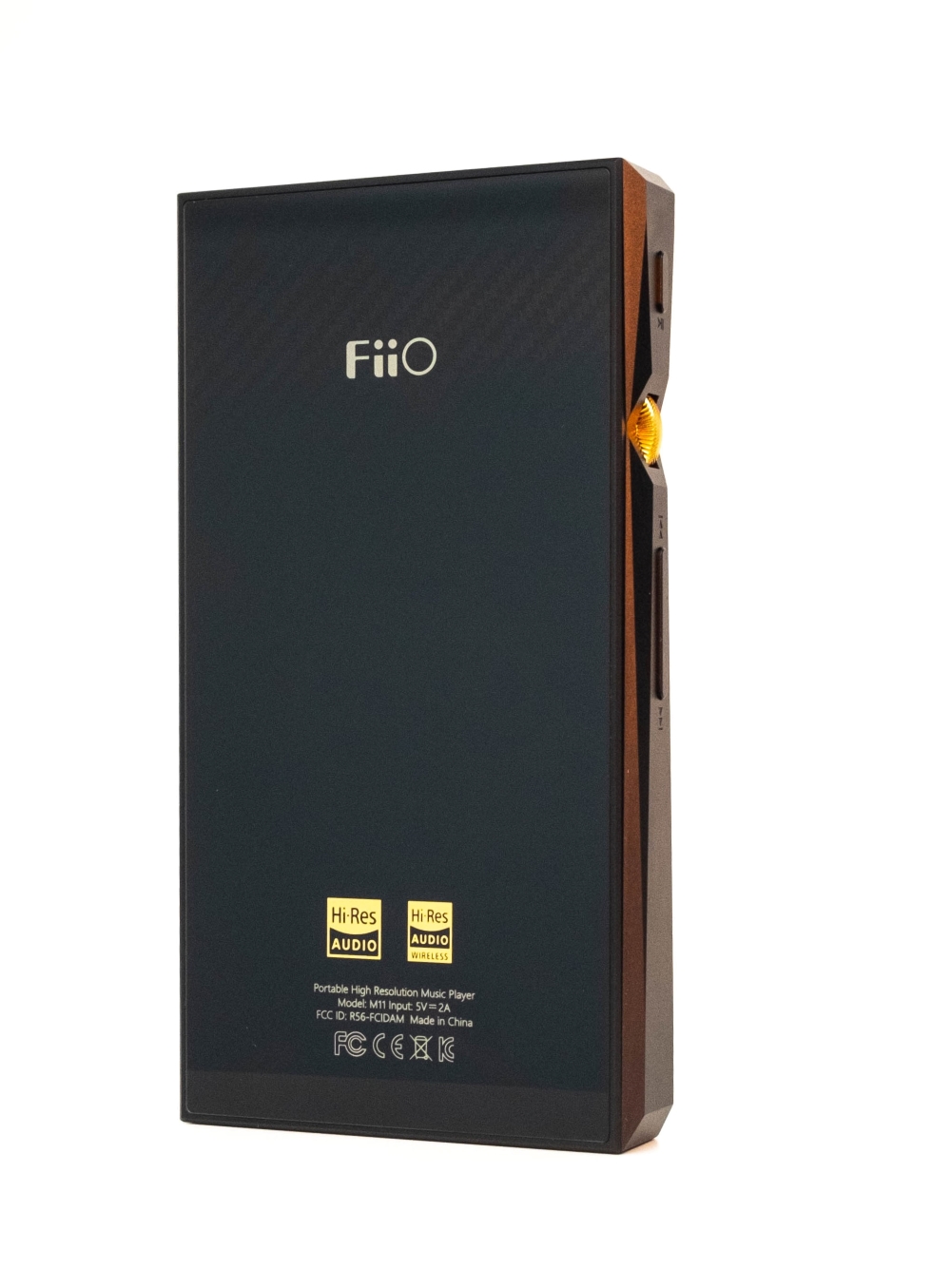
Battery
M11 has a larger 3800 mAh Li-Po battery inside for up to 13 continuous hours of music playback. My harder to drive HD660S on the balanced 4.4 mm connection squeezed ~9 hours and 30 minutes at 80 volume position (out of 120), well, for me that is really good. With FiiO FH7 and FA7 I was at about 55 to 60 volume wise and squeezed 11 hours on the balanced 2.5 mm port. Since the balanced ports are sounding better to me, I didn’t test out the 3.5 mm battery life as I couldn’t wait to listen to the balanced ports again with All to DSD enabled (more on that later).
Turning wireless radios will decrease those numbers, so use Wi-Fi and Bluetooth only when needed.
The best part? M11 can be placed in deep-sleep, basically a stand-by mode for 50 days! That’s 1200 frickin’ hours! The previous champ in this category was M9 with 45 days, followed by X3 MKIII and X5 MKIII at 19 days. I think we have a gold-medal finalist right here as M11 can be forgotten in your purse for a month and a half and it will still wake-up and play an album for you.
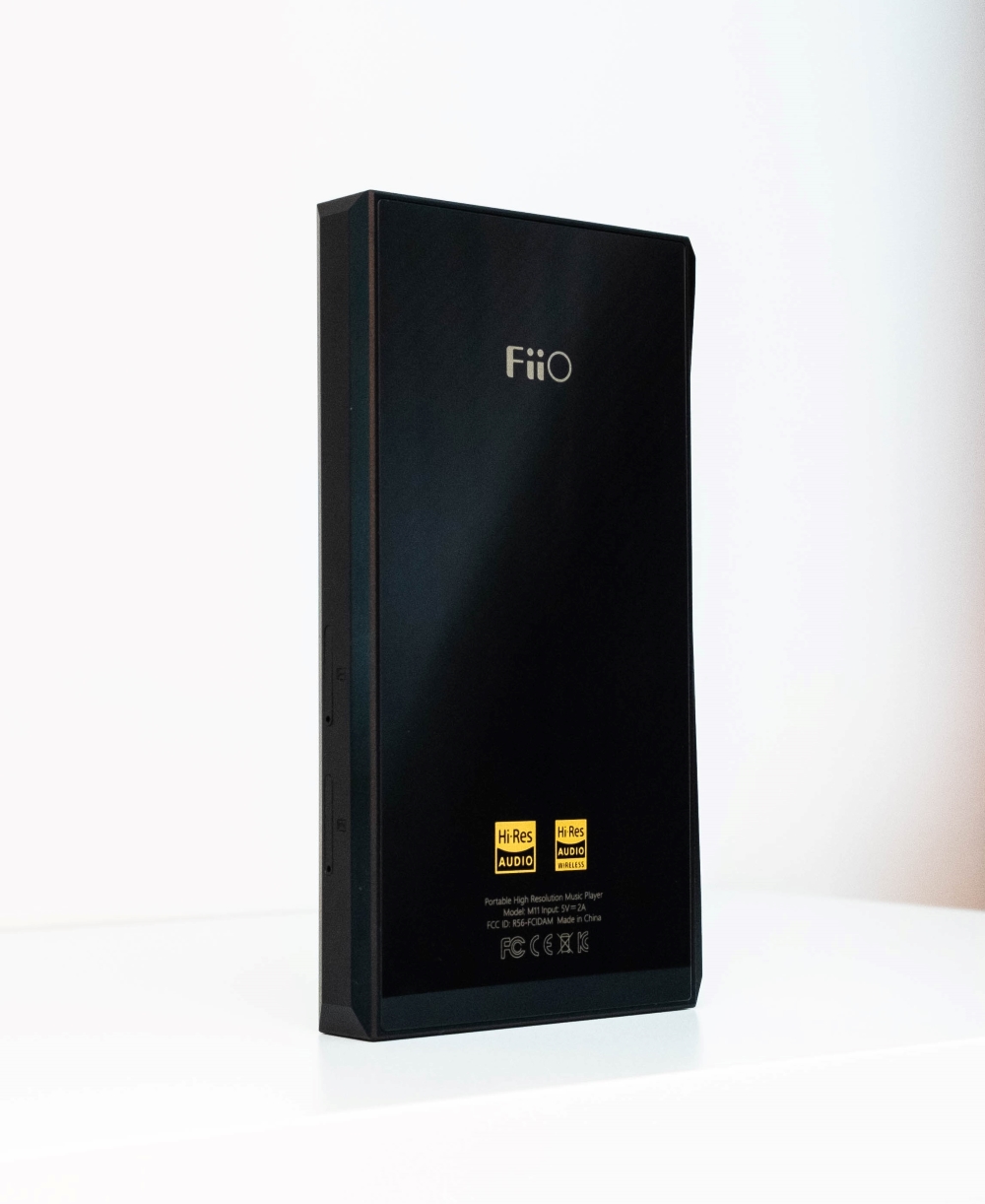
Under the Front Glass
M11 is the next device in FiiO’s portfolio that ditched a fully operating Android OS in exchange for a lighter, faster, custom made Android interface finely tuned and polished by the FiiO engineers. It looks almost identical to that of M6, M7 and M9 and very different than the one on X5 MKIII or X7 MKII.
Since M11 offers a big 3GB RAM memory, you can now install basically any App you want but not directly from the Google Play Store but by manually downloading the .apk file and installing the app or through the APKPure app. Gone are FiiO white-listed apps, install everything you desire but be warned M11 does not have all the features like a normal smartphone is having (for example it doesn’t have an accelerometer).
I really love that FiiO put an “Applications” app buble on the home page also called as FiiO Market where you can download and install directly the most wanted apps as the music streaming apps such as Tidal, Qobuz, Deezer, Spotify, Amazon Music, Roon and many others, there’s also Bandcamp, SoundCloud, TuneIn Radio and many other useful apps.
I already downloaded a lot of them and fired Tidal, opens instantly, no hiccups, no lagging, it’s working as fast as my phone (Mi Mix 2S) and before you ask: Yes, you can download your favorite tunes from Tidal and listen to them offline, hurray!
That quickness I was writing about comes from the 6-core Exynos 7872 CPU that as of right now no one used in a DAP before. Running at 2 Ghz (first 2 cores, remaining ones at 1.6 Ghz) it will instantly open any app including the FiiO Music, add that huge amount of RAM memory and as much as I tried to slow it down, opening multiple apps, streaming and attaching a Bluetooth headphone it always responded fast to my actions. Hell, even the 15 seconds boot time is unbeatable, X5 MKIII boots in about a minute, just for a comparison sake.

Hardware wise there is only one downside, M11 has only 32Gb of ROM memory where all the apps and music files can be stored. That is some, but not a whole lot, I personally recommend leaving that space for the Apps alone and store the off-line music on your microSD cards, there are 2 card slots for a reason don’t you think? MicroSD cards are so cheap nowadays.
At the heart of M11 two powerful and very new DAC chips can be spotted, Dual AK4493EQ Verita Velvet Sound architecture chips that were release not a long time ago.
Asahi Kasei AK4493EQ is part of their premium line of DACs, it is basically the next generation that is replacing the venerable AK4490EQ that we seen in so many devices, X5 MKIII has them as well. AK4493 is of course offering a lower distortion numbers, higher SNR and dynamic range for an overall higher sound performance.
Headphone amp and line-out duties are carried by two OPA1642 in the LPF and by two custom OPA926 at the final amp stage. Having two of everything, means M11 is carrying a true 100% balanced signal via its 2.5 mm or 4.4 mm hp out, I’m very eager to listen to that combo!

Power wise M11 is quite powerful, it even drove my Quad Era-1 planar-magnetics with excellent control and headroom on the 3.5 SE output! The 3.5mm output offers 195mW of power into 32Ω and both 2.5mm and 4.4 mm balanced ports offer up to 550mW of power into 32Ω impedance, those are really good numbers. There are few desktop headphone amps that have lower numbers than that.
In terms of wireless capabilities, M11 is having a dual-band 2.4 Ghz and 5Ghz Wi-Fi and the Wi-Fi signal is Much stronger than that of older X5 MKIII, antennae placement was definitely not an afterthought.
FiiO is using a powerful Bluetooth chip from Samsung that can work as a sender and as a receiver, it can send SBC, aptX, aptX-HD and of course in lossless LDAC and receive SBC or LDAC (starting with 1.05 firmware). I paired my wireless KEF LS50W speakers with it and had a very stable 10-meter range using the aptX codec, I was able to move across apartment without having hiccups of the audio stream. I think M11 Bluetooth implementation is among the best there is.

Graphical User Interface (GUI)
The standard FiiO Music app (on the 1.05 firmware) never crashed on me for about a week and it works exceptionally fast. Its quite easy to use and navigate, I prefer browsing by folder or by directly using the search function with both are nicely implemented.
Having a custom Android interface, you will be using a lot of swipes, swiping down for example from the Now Playing screen will show your brightness levels, Wi-Fi, Bluetooth connections, the audio gain and headphone out functions for the 3.5mm jack, the USB storage or DAC out features, filter settings and enabling or disabling the AirPlay
Here is a small tip: if you want to see all audio setting from the Now Playing scree, just swipe down and push the filter settings and all your audio settings will be revealed.
As with their M6, M7 and M9 there are a lot of shortcuts just by swiping, for example: swiping upwards from the right corner will send you to the main menu, swiping upwards from the left corner will send you back one level in the OS, swiping from left to right will show the playlist, there are more shortcuts, I recommend checking the quick guide for more details.
Upgrading the firmware is recommended to be done via OTA (Over the Air) using Wi-Fi as at the end of the update the .fw file will be automatically deleted.
Overall the M11 GUI is very polished, at least on the 1.05 fw, its lightning fast, with no stuttering, even streaming Hi-Res files via Tidal and then sending the audio stream via Bluetooth doesn’t slow it down.
So fast this the fastest DAP I’ve tested in a long time.
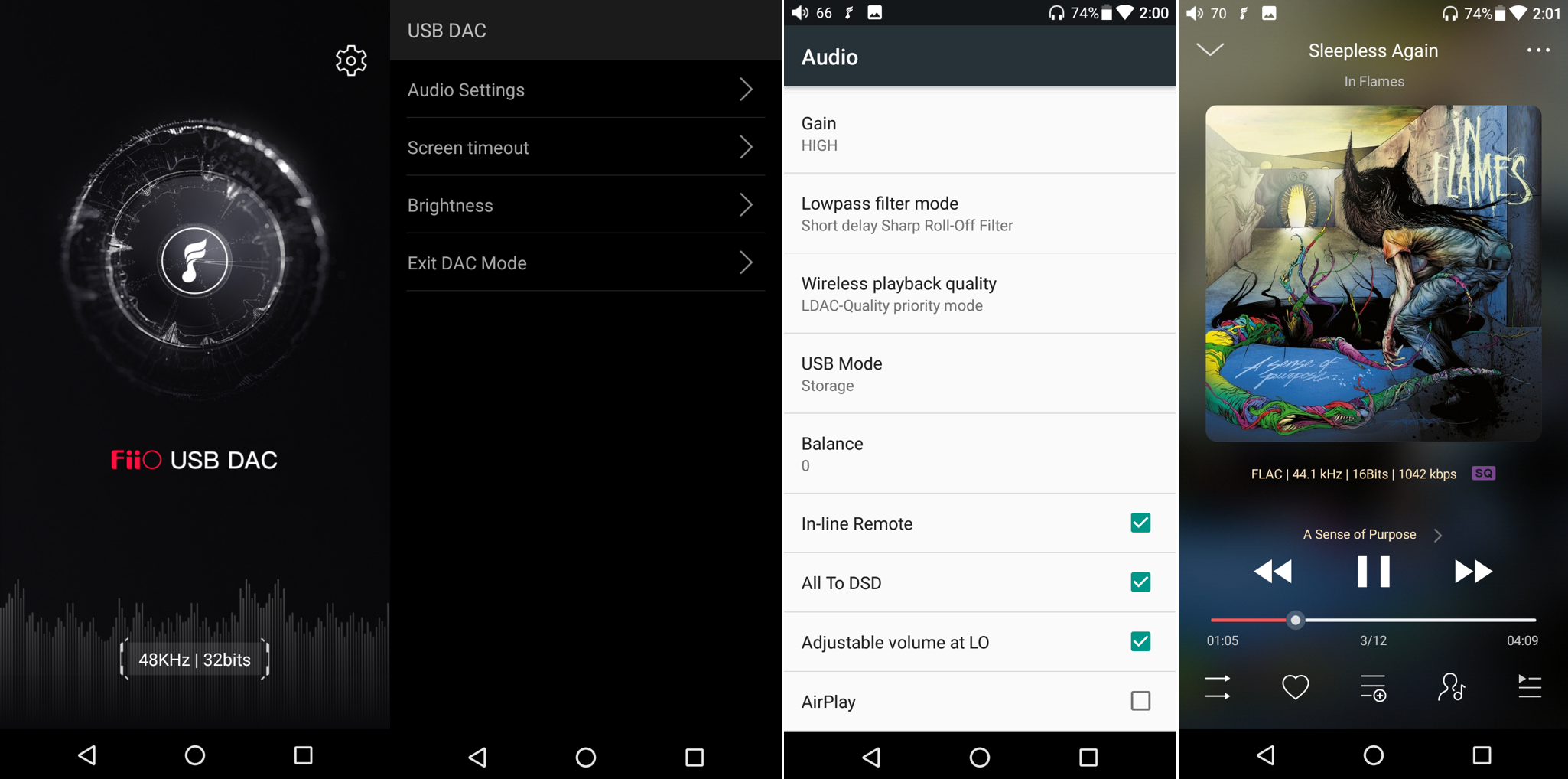
Audio Performance
On the go I have listened to M11 mostly via the 2.5 mm balanced out with the FiiO’s very sensitive FH7 and FA7 IEMs which are picky in terms of noise floor and at home mostly with my Quad ERA-1 planars via the 3.5 mm SE output.
I was surprised to properly drive my ERA-1 planars on the SE 3.5 mm output at about 105 volume with modern tunes and at about 110 for high dynamic range tracks as older jazz or classic, that was unexpected. On the balanced out there is even more power on tap so it should have an even higher headroom for harder to drive headphones.
After about 2 days of non-stop burn-in I started listening to it closely and I am happy to report that FiiO went with a cleaner presentation and with a much wider sound. It reminds me a lot about their Q5 flagship DAC, the tuning is almost the same.
M11 has a layered and spread out sound, normally with portable devices I am not having such a wide spread and out of head experience, M11 sounds more like a pumped-up desktop DAC/Amp than as a portable DAP.
I think it slams awesome in the bass department and kicks my eardrums with authority, it is certainly in the higher-class category.

First day I received it the transient response was Ok, but not standing out, treble had too much sparkle. After just two days of burn-in transients became faster and treble remained as clean and defined but not harsh anymore, a step in the right direction for sure.
Since I was using a FiiO M9 and M6 for the past months, moving on in the upper chain to the M11 it is like I just opened my windows to the music to let the air inside and spread across my music.
As such, layering is the name of the game with M11, so far in the FiiO line-up this the airiest sounding device with lots of void-space between the notes, having a very accurate pin-point imaging.
Depth is crazy good, AKM chips are famous for creating out of head experiences and a true balanced signal with an incredible cross-talk (almost non-existent) creates this very impressive and deep sound field. Soundstage is as well on the wider and taller side, it is much wider than that of M6 or M7 for example, hard to quantify in numbers but I’d tell its twice the size.
Even the tiny FH7 and FA7 In-Ear-Monitors are sounding differently, if I didn’t feel them inserted, I would tell I am listening to my full-sized headphones in a balanced configuration. A tall and wide sound with a pin point imaging is the sign of a good balanced configuration.
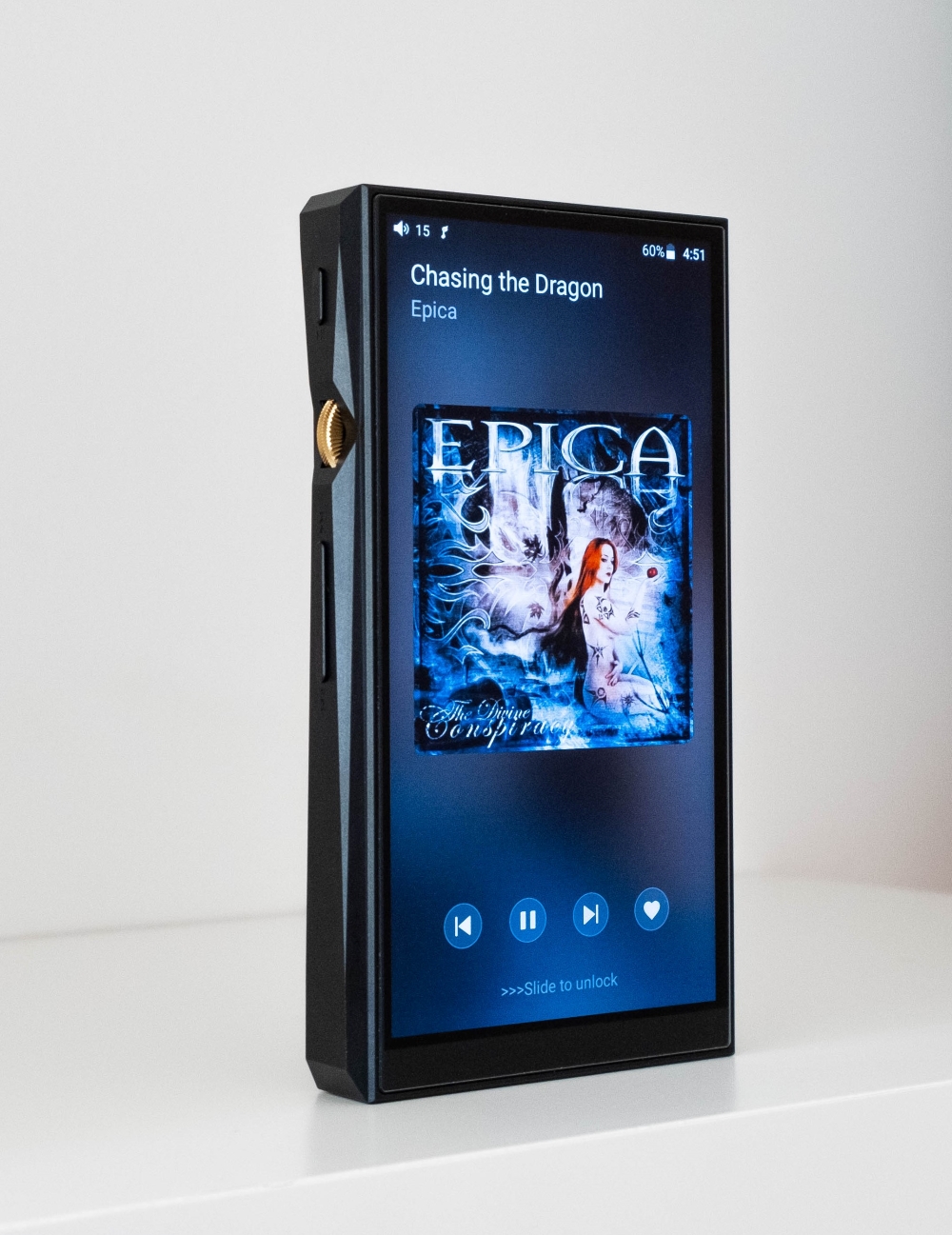
In terms of frequency response M11 is mostly linear, with just a tiny accent in the upper treble and mid-bass.
I just fired my personally favorite hardcore band and put those hard-kicking tunes to good work and well, not a minute have passed and I was tapping my feed with a happy grin, fun factor test was definitely passed.
Compared to my reference desktop setup, M11 has just a bit less sub-bass presence and slam, but that was expected. Otherwise, sub-bass is quite neutral, it is easily felt on the right passages but never overcomes the mid-bass or lower midrange. Mid-bass is much better portrayed with a slight emphasis, just enough so sound technical and natural in the same time. It is by no means overdone; it just pumps a bit more information in this area for a pleasant analogue-ish presentation.
As such, M11 is a bit warm, but in the good meaning of the word as it doesn’t affect transparency levels or layering. M11 is in exact opposite direction of muddy or foggy sound.
Midrange, aahhh the toxic AKM midrange didn’t run away and it is very present, most of the time, midrange will tickle your years and this is where M11 really shines as it is a bit fuller, it is denser and has more meat to the bone. Decay of the midrange is longer so you’ll have more time appreciating those notes. Everything that has to do with it as voices, strings, pipes, piano and so on will have a melodious and soul-reaching performance. What can I say? This is the midrange I like, this is my favorite frequency range and M11 is doing justice to it.
Treble is again outstanding and few might be impressed more by its treble performance than by its midrange. It is clear and has a very good shape and outline, it could be fatiguing at first, let it play for 2 days and it will settle down. Treble has a lot “zing” and not a whole lot of “SSSsss” so that’s a good thing in my book. It will not play super safe with bright and harsh sounding headphones so be warned about that.
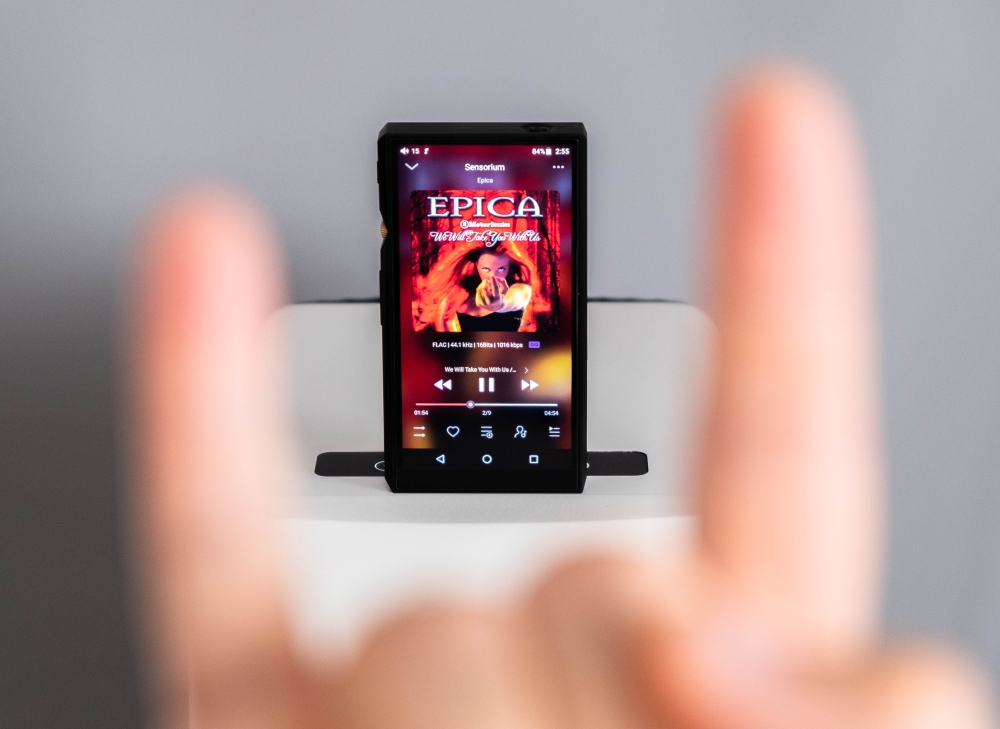
All to DSD
FiiO implemented a very interesting feature that can be found in Settings > Audio > All to DSD. You can enable or disable it. With it enabled all PCM audio data stream will be converted to DSD format during the digital to analog conversion process. Basically, any sound processed by M11, be it a video file, an audio file or a game will be converted to DSD. With it enabled everything will sound smoother, more natural and very easy-going without touching the transient response. There is only one drawback, it will consume more power and will dissipate more heat (M11 will be warmer to the touch). I do recommend at least checking it for a few albums.

Driving Power
Driving a full-sized Sennheiser HD660S was an easy job for M11 even on the 3.5 SE output, with Quad Era-1 volume wise I was almost maxed but still dynamics and headroom was there in spades.
Since HD660S has a 4.4 mm balanced cable in the package and M11 has a 4.4 mm output as well, I immediately connected the two and started playing the same tunes. Due to much better cross-talk numbers music became even more layered and left to right soundstage became even wider. The air-bubbles between the notes became bigger as well. Transients and depth remained the same, it is weird but I do believe the sound became also smoother, like notes are coming to listener from a pitch-black background in a relaxed manner somehow.
Connecting sensitive IEMs as FA7 and FH7 revealed a very clean, hum and noise-free background, I think this is the cleanest DAP FiiO ever released to date.
Volume wise I was sitting between 50 and 55 (out of 120) so tons of headroom left with among the best dynamics in a portable DAP. If possible, I recommend going the balanced way for a better driver control, for double the power and of course for a wider sound field.
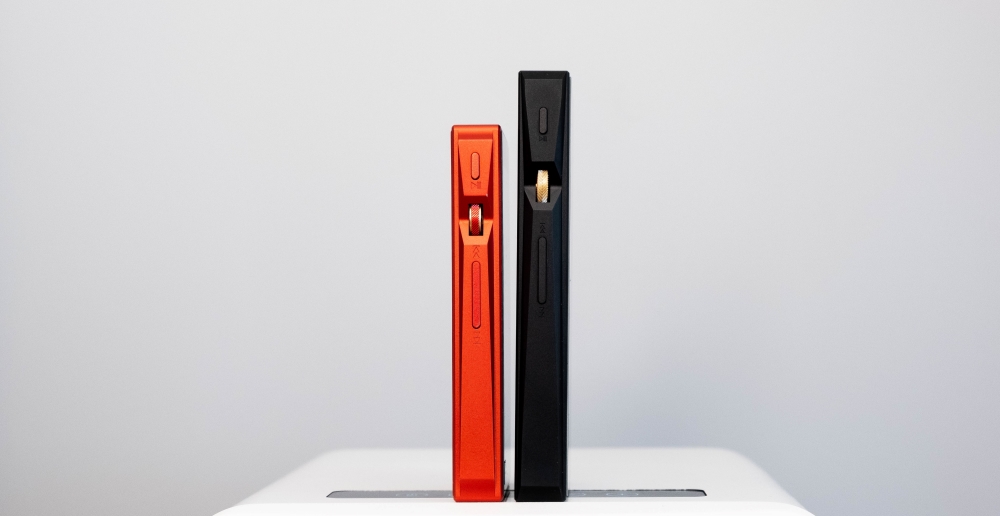
Comparisons
M11 vs X5 MKIII
M11 is the spiritual successor to X5 MKIII so its natural and mandatory comparing the two. X5 MKIII was really cool when it was released, it looked and felt impressive sound was great but not top-notch, at least on IEMs, its performance was plagued by the slight hiss and dirty noise-floor on sensitive IEMs.
M11 is taller, heavier, has an extra headphone out, it is much faster by comparison, offers few additional Bluetooth features and an extra codec, has a stable Wi-Fi connection and a heftier battery life. M11 looks like a grown-up product from every point of view, there isn’t a thing that I really disliked on it.
Sound wise X5 MKIII has a grainy presentation in the mid treble and sounds leaner and polite by comparison, it works better with mid and high impedance headphones where noise-floor would not be an issue.
M11 sounds noticeable wider and deeper, the grain in the mid treble is also gone, replaced by a very revealing treble performance. M11 has also a pitch-black background and doesn’t have a noise-floor even with high sensitivity IEMs. M11 will also reveal just a little bit more out of your tunes, will have more nuance and shimmer. M11 sounds like a trouble-free X5 MKIII where every nay became an aye.

Conclusions
M11 looks like a really high-end DAP to me even if FiiO is not positioning it as such. It has the fastest CPU and SoC out of every DAP on the market, even those shiny 3K DAPs are moving slower and offer less RAM memory. M11 offers three headphone standards and two of them are balanced, it has the best Bluetooth chip capable of aptX-HD, LDAC and HWA and can be a sender or a receiver, has 5Ghz stable Wi-Fi connection and you can install any of your preferred streaming Apps, Tidal Hi-Fi worked as a charm for me, including downloading and off-line listening. M11 lacks only a bigger ROM memory, but makes up for it by offering two microSD card slots.
Sound wise it resembles a high-quality DAC/Amp unit and offers impressive traits as wide soundscape, impressive depth and pin-point accuracy. Transparency and detail retrieval are at higher levels and it can easily replace a desktop DAC if needed. I was driving full-sized headphones on the SE 3.5mm with plenty of headroom left so power wise it is what doctor ordered.
For $450 it is a no-brainer and can compete with much pricier offerings from the competition.
You can get it from here (Apos is offering free shipping in the USA, free 30-day returns in case you don’t like it, an extra 1 year of warranty and lowest price guarantee).
PROS:
- Impressive design, materials and attention to detail
- Super-fast response time
- Simple to use and elegant GUI, easy to remember button placement
- Wide sound-field, deep and airy
- Excellent amount of micro-details
- Excellent wireless capabilities, probably the best
- Quite neutral with a slight musical presentation
- Good attack and transients
- Very affordable considering the overall performance
CONS:
- Only 32GB of ROM memory
- Would like a harder sub-bass slam
ASSOCIATED EQUIPMENT:
- DAPs: FiiO M11, X5 MKIII
- DACs: Matrix X-Sabre Pro, Aune S6 Pro, Burson Playmate & Swing
- Headphone amps: Headamp Gilmore Like MK2, Pico Power, Erzetich Bacillus
- Headphones: Sennheiser HD660S, Momentum M2.0, Quad Era-1
- IEMs: FiiO FA7, FH7
- Speakers: KEF LS50W


